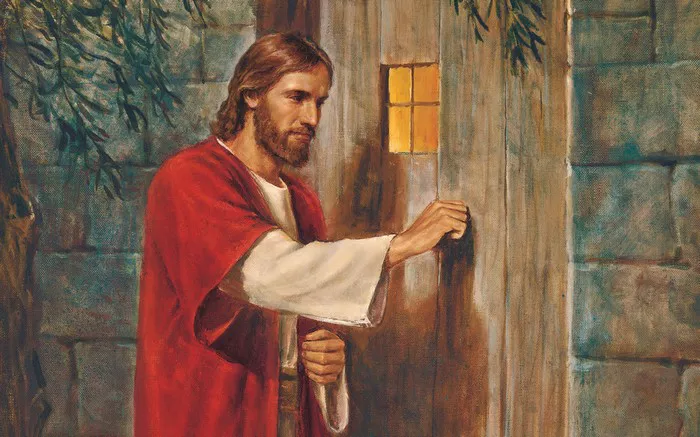The events leading to Jesus Christ’s crucifixion are pivotal to Christian theology, symbolizing redemption, sacrifice, and divine love. Among these events, the episode at Gethsemane holds significant theological and spiritual implications. Gethsemane, a garden at the foot of the Mount of Olives, serves as the setting for a profound moment in Jesus’ life. This essay explores the multifaceted reasons behind Jesus’ journey to Gethsemane, delving into theological, spiritual, and human dimensions.
Historical Context
Understanding the significance of Gethsemane necessitates contextualizing it within the broader narrative of Jesus’ ministry and the socio-political environment of first-century Palestine. Jesus’ ministry was marked by teachings challenging religious norms, advocating love, compassion, and justice, and proclaiming the arrival of God’s kingdom. However, these teachings often clashed with the religious authorities and Roman rule, leading to increasing opposition.
As Jesus approached Jerusalem during the Passover festival, tension escalated. His triumphal entry into Jerusalem, celebrated by crowds waving palm branches, contrasted sharply with the authorities’ growing hostility. The backdrop of political turmoil and religious intrigue sets the stage for the events unfolding in Gethsemane.
Theological Significance
The theological significance of Gethsemane lies in its portrayal of Jesus’ humanity and his submission to the divine will. In the garden, Jesus grapples with the impending ordeal, expressing his anguish and praying fervently. This moment showcases Jesus’ human vulnerability, his capacity for suffering, and his obedience to God’s plan.
Central to Christian theology is the concept of atonement, the belief that Jesus’ sacrificial death reconciles humanity with God. Gethsemane represents the beginning of this redemptive process. Jesus’ prayer, “Not my will, but yours be done,” epitomizes his willingness to undergo suffering for the sake of humanity’s salvation.
Furthermore, Gethsemane foreshadows the themes of abandonment and betrayal that characterize Jesus’ passion. Despite his disciples’ presence, Jesus experiences profound loneliness as they sleep while he prays. This abandonment echoes the later abandonment by his disciples and culminates in Jesus’ cry of dereliction on the cross, “My God, my God, why have you forsaken me?”
Spiritual Struggle
The portrayal of Jesus’ agony in Gethsemane resonates deeply with the human experience of spiritual struggle. Jesus’ cry, “My soul is overwhelmed with sorrow to the point of death,” reflects the depths of emotional and psychological anguish. This moment of intense spiritual conflict exemplifies Jesus’ solidarity with humanity in its moments of despair and doubt.
Gethsemane becomes a symbol of spiritual warfare, where Jesus confronts the forces of darkness and temptation. The devil’s temptation to evade suffering and forsake his mission echoes the temptations Jesus faced in the wilderness at the beginning of his ministry. However, unlike the wilderness temptations, Jesus emerges victorious in his unwavering commitment to God’s will.
Moreover, Gethsemane invites believers to confront their own moments of spiritual struggle and surrender. Just as Jesus found strength through prayer, Christians are encouraged to seek solace and guidance in times of trial, trusting in God’s faithfulness and ultimate victory.
Fulfillment of Prophecy
The events at Gethsemane also fulfill prophetic scriptures, emphasizing Jesus’ role as the Messiah. In the garden, Jesus alludes to his impending arrest, stating, “the Son of Man is betrayed into the hands of sinners.” This fulfillment of prophecy underscores Jesus’ identity as the fulfillment of Old Testament promises.
Additionally, Gethsemane marks the culmination of Jesus’ journey towards the cross, as foretold by prophets such as Isaiah. The suffering servant motif in Isaiah 53, depicting a figure who bears the sins of many and suffers on behalf of others, finds its fulfillment in Jesus’ agonizing prayer and subsequent arrest.
The alignment of Jesus’ experiences with prophetic scriptures reinforces his messianic identity and underscores the divine orchestration of events leading to his crucifixion and resurrection.
Submission to Divine Will
Central to Jesus’ journey to Gethsemane is his submission to the divine will. Despite the agony and apprehension he faces, Jesus willingly embraces the path laid out before him, knowing it will culminate in his sacrificial death. This submission exemplifies Jesus’ obedience to God and his trust in the divine plan for redemption.
Jesus’ prayer in Gethsemane serves as a model of surrender for believers, urging them to align their will with God’s purposes. The invitation to pray, “Not my will, but yours be done,” echoes throughout Christian spirituality, calling individuals to relinquish control and submit to God’s sovereignty.
Furthermore, Jesus’ submission in Gethsemane challenges conventional notions of power and strength. In his vulnerability and surrender, Jesus embodies a different kind of strength—one rooted in humility, obedience, and sacrificial love. This alternative vision of strength serves as a profound paradigm shift, inviting followers to embrace weakness and vulnerability as pathways to spiritual transformation.
Conclusion
The journey to Gethsemane encapsulates the essence of Jesus’ mission and ministry. It reveals his humanity, his spiritual struggle, and his unwavering commitment to God’s will. Gethsemane serves as a pivotal moment in Christian theology, symbolizing redemption, sacrifice, and divine love.
Through Jesus’ example, believers are invited to confront their own moments of anguish and uncertainty, trusting in God’s faithfulness and ultimate victory. The theological, spiritual, and human dimensions of Gethsemane intersect, offering profound insights into the nature of God and the meaning of discipleship.
As Christians reflect on Jesus’ journey to Gethsemane, they are called to embody his humility, obedience, and sacrificial love in their own lives. Gethsemane stands as a timeless reminder of the transformative power of surrender and the enduring hope found in God’s redemptive plan.

